Archive for January, 2014
Decade of youth: the 1950s revisited
30 January 2014 | Reviews
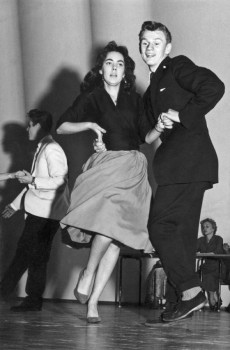
Rock around the clock in Helsinki, too! All photos here from Rasvaletti; photographer unknown, 1958
Rasvaletti. Valokuvia 1950-luvun Helsingistä /
Fotografier från 1950-talets Helsingfors
[Hair-grease. Photographs from 1950s Helsinki]
Työryhmä [working group]: Yki Hytönen, Tuomas Myrén, Riitta Pakarinen, Aki Pohjankyrö, Hilkka Vallisaari
Helsinki: Helsingin kaupunginmuseo, Helsinki City Museum,
2013. 211 pp., ill.
ISBN 978-952-272-499-1
€45, hardback
Onnen aika? Valoja ja varjoja 1950-luvulla
[Time of happiness? Light and shadow in the 1950s]
Toimittaneet [Ed. by]: Kirsi-Maria Hytönen & Keijo Rantanen
Jyväskylä: Atena, 2013. 249 pp., ill.
ISBN 978-951-796-924-6
38€, hardback
The 1950s rocked! They literally did – that is when the world got rhythm: Blue Suede Shoes by Elvis and the film Blackboard Jungle, with Bill Haley’s hit Rock Around the Clock, for example.
The development of new sound reproduction – long-playing records and tape recorders – was essential to the spreading of the gospel of rock and pop here, there and everywhere.
In Finland, the shocking new music was a smash hit among a group of young urban men called lättähatut, flathats, who also wore tight trousers, black overcoats and pointed shoes. Their girls dressed in angora sweaters and tight trousers or skirts. These teenagers, who hung around together very late in the evenings, were largely considered not only a nuisance but also a possible danger to the peaceful development of society (not only in Finland…). More…
How much did Finland read?
30 January 2014 | In the news
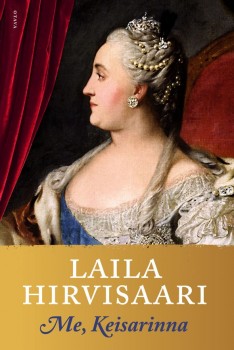 The book year 2013 showed an overall decrease – again: now for the fifth time – in book sales: 2.3 per cent less than in 2012. Fiction for adults and children as well as non-fiction sold 3–5 per cent less, whereas textbooks sold 4 per cent more, as did paperbacks, 2 per cent. The results were published by the Finnish Book Publishers’ Association on 28 January.
The book year 2013 showed an overall decrease – again: now for the fifth time – in book sales: 2.3 per cent less than in 2012. Fiction for adults and children as well as non-fiction sold 3–5 per cent less, whereas textbooks sold 4 per cent more, as did paperbacks, 2 per cent. The results were published by the Finnish Book Publishers’ Association on 28 January.
The overall best-seller on the Finnish fiction list in 2013 was Me, Keisarinna (‘We, tsarina’, Otava), a novel about Catherine the Great by Laila Hirvisaari. Hirvisaari is a queen of editions with her historical novels mainly focusing on women’s lives and Karelia: her 40 novels have sold four million copies.
However, her latest book sold less well than usual, with 62,800 copies. This was much less than the two best-selling novels of 2012: both the Finlandia Prize winner, Is, Jää (‘Ice’) by Ulla-Lena Lundberg, and the latest book by Sofi Oksanen, Kun kyyhkyset katosivat (‘When the doves disappeared’), sold more than 100,000 copies.
The winner of the 2013 Finlandia Prize for Fiction, Riikka Pelo’s Jokapäiväinen elämämme (‘Our everyday life’, Teos) sold 45,300 copies and was at fourth place on the list. Pauliina Rauhala’s first novel, Taivaslaulu (‘Heaven song’, Gummerus), about the problems of a young couple within a religious revivalist movement that bans family planning was, slightly surprisingly, number nine with almost 30,000 copies.
The best-selling translated fiction list was – not surprisingly – dominated by crime literature: number one was Dan Brown’s Inferno, with 60,400 copies.
Number one on the non-fiction list was, also not surprisingly, Guinness World Records with 35,700 copies. Next came a biography of Nokia man Jorma Ollila. The winner of the Finlandia Prize for Non-Fiction, Murtuneet mielet (‘Broken minds’, WSOY), sold 22,600 copies and was number seven on the list.
Eight books by the illustrator and comics writer Mauri Kunnas featured on the list of best-selling books for children and young people, with 105,000 copies sold. At 19th place was an Angry Birds book by Rovio Enterntainment. The winner of the Finlandia Junior Prize, Poika joka menetti muistinsa (‘The boy who lost his memory’, Otava), was at fifth place.
Kunnas was also number one on the Finnish comic books list – with his version of a 1960s rock band suspiciously reminiscent of the Rolling Stones – which added 12,400 copies to the figure of 105,000.
The best-selling e-book turned was a Fingerpori series comic book by Pertti Jarla: 13,700 copies. The sales of e-books are still very modest in Finland, despite the fact that the number of ten best-selling e-books, 87,000, grew from 2012 by 35,000 copies.
The cold fact is that Finns are buying fewer printed books. What can be done? Writing and publishing better and/or more interesting books and selling them more efficiently? Or is this just something we will have to accept in an era when books will have less and less significance in our lives?
Kuka on saamelainen ja mitä on saamelaisuus – identiteetin juurilla [Who is a Sámi and what being Sámi means – looking for the roots of identity]
30 January 2014 | Mini reviews, Reviews
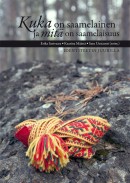 Kuka on saamelainen ja mitä on saamelaisuus – identiteetin juurilla
Kuka on saamelainen ja mitä on saamelaisuus – identiteetin juurilla
[Who is a Sámi and what being Sámi means – looking for the roots of identity]
Toim. [Ed. by]: Erika Sarivaara, Kaarina Määttä & Satu Uusiautti
Rovaniemi: Lapin yliopistokustannus (Lapland University Press), 2013. 182 pp.
ISBN 978-952-484-651-6
€29, paperback
This anthology updates one of the most burning questions, one which also has political consequences: who has the right to belong to an indigenous people, and who is entitled to define it? Of the approximately 100,000 Sámi – the only indigenous people in the European Union – around 7,000 live within Finnish territory. The writers represent Sámi research at the Lapland University, and they examine the definition of ‘the Sámi without a status’, i.e. people not included on the election list for the Sámi Parliament. The book questions the prevailing discourse, which characterises Sámi history as a withdrawal from the progress of civilisation; this is interpreted as a survival strategy, and the Sámi are not primarily regarded as the victims of colonialism and modernisation. The work also highlights the inner hierarchies of the Sámi and analyses both the reindeer-farming Sámi, regarded as elite, as well as the marginalia, the Sámi who engage in forestry and agriculture to make a living. Articles are sensitive, sometimes provocative, and they shine a spotlight on every ethnic group as well as the fundamental questions of the individual, the right to one’s own identity, language and history.
Like it, or else
23 January 2014 | Non-fiction, Tales of a journalist

Illustration: Joonas Väänänen
Hitting the ‘like’ button is not only boring but also working its way from Facebook deeper into society, says Jyrki Lehtola. Surely there must be some other way of solving the world’s problems?
At the end of the autumn the theatre critic of the Helsingin Sanomat newspaper panned Sofi Oksanen’s stage adaptation of her novel Kun kyyhkyset katosivat (‘When the doves disappeared’, 2013).
That’s life. Artists struggle with their projects, sometimes for years. Then a critic takes a glance at the result and crushes it in a matter of hours.
Then there’s a huff about unfairness, the use of power and all the things artists blow off steam about when they feel that their creations have been treated unfairly. The debate is held between injured authors and sometimes the critic, but generally few others participate, and just as well. More…
Hannu Raittila: Terminaali [Terminal]
23 January 2014 | Mini reviews, Reviews
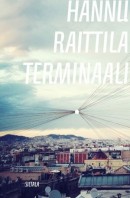 Terminaali
Terminaali
[Terminal]
Helsinki: Siltala, 2013, 454 pp.
ISBN978-952-234-174-7
€32.90, hardback
The airport is a fertile environment for a contemporary novel: a crucible of chance encounters. In his sixth, extensive novel, Hannu Raittila (born 1956) masterfully combines plot and structure: there is adventure, personal relationships, hard living, a love affair, life on a remote Swedish-speaking island. Commodore Lampen sets out to look for his daughter Paula, who has been forcibly brought back to Finland after spending years touring foreign airports. Back in the 1990s Paula and her friend Sara spent a lot of time at Helsinki airport, which developed its own culture of international encounters; this then took them abroad – by accident, on 11 September 2001. Various adventures ensued, including an involvement with the Syrian civil war. Globalisation is based on the free mobility of goods and people, but it also means crumbling of societal structures, and in Raittila’s novel – paradoxically enough – the growing rarity of human encounter.
Verse and freedom
16 January 2014 | Articles, Non-fiction
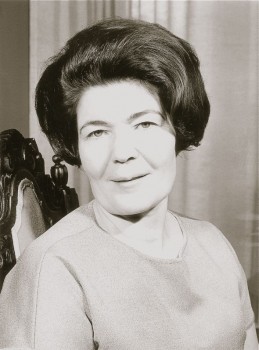
Aale Tynni (1913–1997). Photo: WSOY
Finnish poetic modernism, which with its freedom of rhythm came to dominate the literary mainstream of the 1950s, posed a particular challenge to the poets of the classical metrical and romantic poetic tradition. Aale Tynni (1913–1997) is not a poet of any one school or form, but rhythm is the deepest foundation of her poems, whether expressed in metre, free verse or the speech rhythms that characterise some of her poems of the 1950s and 60s, as well as those of her final years.
An Ingrian Finn, Tynni left Ingermanland near Petersburg for Finland as a refugee after the First World War, in 1919. The war and the period of uncertainty that followed it are present in her poems as an allegory, sometimes appearing as a dance of death or a carnival. At other times they emerge in the myth of Phaethon, who with his sun chariot is in danger of throwing Mother Earth off her axis, or as a game of chess in which God and the angel Gabriel play with the planets and moons as pieces. The poet makes use of mythic and cosmic references to widen her scope and to portray Man in the stages of history and the present age. More…
Air, blue and gold
16 January 2014 | Fiction, poetry
Poems. Introduction by Tuula Hökkä
The arch bridge
From Ylitse vuoren lasisen (‘Over the glass mountain’, 1949)
And God said: to others I’ll give other tasks, but the task I’ll give to you
is to make a curving bridge, my child, with an arch that’s round and true.
For everywhere around the earth human beings are laden with gloom,
and they’ll come to cross an arching bridge in their anguish and their doom.
Make a bridge that spans the precipice, a bridge over the abyss,
one that shines to my glory with radiance, sparkling like this.
I said: They will come with heavy boots, and heels caked with clay –
how can my bridge withstand their weight, yet also shine this way,
not tarnish or break apart as their crowding presence nears?
And God said: well, it can only be done by means of blood and tears.
Your heart is stronger than mountain rock, the ore that’s buried there –
Put a piece of it into the bridge support, and you’ll get the bridge to bear.
Add a piece of the hearts of those you love, and I know they won’t condemn,
but will surely grant you forgiveness if you make a bridge for them.
Make a bridge to the glory of God, my child, make a bridge with arching light
that will span the depths and shine for ever, with radiance sparkling bright.
Don’t lock the sorrow out of your heart as the bridge you make appears.
Nothing gleams more beautifully than the brilliance of pure tears. More…
Mikko-Olavi Seppälä & Riitta Seppälä: Aale Tynni. Hymyily, kyynel, laulu [Aale Tynni. A smile, a tear, a song]
16 January 2014 | Mini reviews, Reviews
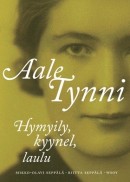 Aale Tynni. Hymyily, kyynel, laulu
Aale Tynni. Hymyily, kyynel, laulu
[Aale Tynni. A smile, a tear, a song]
Helsinki: WSOY, 2013. 488 pp., ill.
ISBN 978-951-0-38306-3
€37, hardback
The poet, author and translator Aale Tynni (1913–1997), an Ingrian Finn who came to Finland as a refugee after the First World War in 1919, published 15 collections of poetry between 1938 and 1987. Among her translations are works by Ibsen, Shakespeare, Yeats and Racine. This extensive biography, compiled and written by Tynni’s daughter Riitta Seppälä and her grandson, historian Mikko-Olavi Seppälä, is an in-depth, lively portrait of a poet who, in her time, was both admired and criticised for her choices of form and content. Tynni felt that classical metrical tradition was closest to her, and patriotism was one of her themes; however, in the postwar years the freedom of rhythm of Finnish modernism began to flourish, and politics also gained strength in the literary world. In 1948 Tynni won the gold medal for literature in the – rather bizarre and short-lived – art competitions at the Summer Olympics in London with her poem ‘Laurel of Hellas’. Tynni experienced dramatic turns in her personal life; she underwent a prolonged divorce from her first husband who bitterly fought it. Two of her three children committed suicide in adulthood. She was finally free to marry the widowed poet Martti Haavio (aka P. Mustapää) in 1960, a marriage of soulmates that lasted until Haavio’s death in 1973.
Smarty pants?
9 January 2014 | This 'n' that
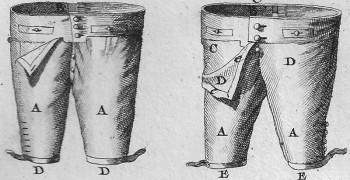
Culottes: 18th-century smartwear. Picture from ‘L’art du tailleur’ by Diderot & d’Alembert. Wikipedia
Eat your heart out, Angry Birds? Ever since the global success story of the Nokia phone company, Finns have been trying to rule the world with global electronic products. Among the latest achievements are analytical undies. The Finnish company Myontec has invented underwear embedded with electromyographic sensors, which measure the workings of your muscles and send the data to a computer.
Last year The New York Times gave the pants third place on their list of ‘32 Innovations that Will Change Your Tomorrow’.
What, you’re not athletic? You might stir from your sedentary slumber if your pants let you know how pathetically little you work out for your own good.
In late January Myontec’s smartshorts won the Sport & Fitness category at the Wearable Technology Innovations World Cup 2013/2014 in Munich. Who knows how far, globally, this will go? Smartpants, smartphones: perhaps your knickers will start talking one day – thus combining the advantages of two electronic appliances in which the Finns have expertise.
Reading matters? On new books for young readers
9 January 2014 | Articles, Children's books, Non-fiction
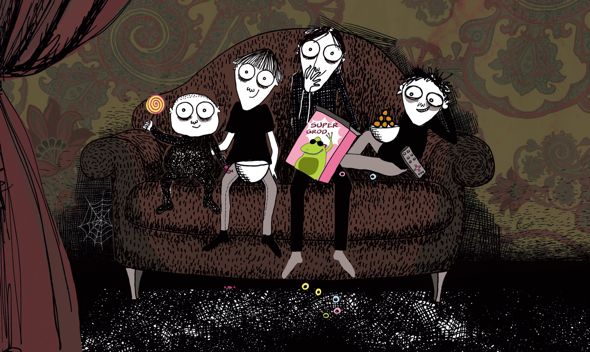
The Pixon brothers don’t read books, they love the telly: story by Malin Kivelä, illustrations by Linda Bondestam (Bröderna Pixon och TV:ns hemtrevliga sken, ‘The Pixon brothers and the homely shimmer of the telly’)
Finnish picture books for children have long been reliable export goods around the world. In the last few years, a number of novels for children have come along in their wake: works by authors such as Timo Parvela and Siri Kolu have been translated into a good many languages.
Now young adult literature has also blazed a trail on to the international market – in what also seems to be almost a matter of precision timing with regard to the Frankfurt Book Fair 2014. Finnish publishers have been investing in their home-grown lists of children’s and young adult books ever since the turn of the millennium, and now the time has come to harvest the fruits of their long-term efforts.
Malin Kivelä & Linda Bondestam: Bröderna Pixon och TV:ns hemtrevliga sken [The Pixon brothers and the homely shimmer of the telly]
9 January 2014 | Mini reviews, Reviews
 Bröderna Pixon och TV:ns hemtrevliga sken
Bröderna Pixon och TV:ns hemtrevliga sken
[The Pixon brothers and the homely shimmer of the telly]
Helsingfors: Schildts & Söderströms, 2013. 38 pp.
Illustrerad av [Illustrated by] Linda Bondestam
ISBN 978-951-523-124-6
€22, hardback
Finnish translation:
Pixonin pojat ja TV:n kotoisa kajo
Suomentanut [translated by] Maarit Halmesarka
Helsinki: Teos, 2013. 38 pp.
ISBN 978-951-851-524-4
€27.90, hardback
The four Pixon brothers spend their time watching the telly and eating cereals and sweets. Their mother, in desperation, constantly demands that they go out and play, but they just don’t. The thin brothers’ teeth are bad as they have no vitamins in their blood: indeed they are as fit as 90-year-olds. One day the telly goes bust and the brothers end up in their neighbours’ home, where the two ladies cook them a good meal. They finally do go out and play – until the point of exhaustion: the story presents the reader with sinister turns à la Grimm brothers or Hoffmann, which the gloomy, dark pictures, suddenly devoid of colours, comically illustrate. But colours return to the pictures as well as to the brothers, who are now as fit as any 64-year old! This is the authors’ second book for children. Kivelä’s lesson takes the mickey out of didacticism but does not lose the point, so fun is had by all. Bondestam’s detailed, graphic pictures spice the story with amusing horror.
Kreetta Onkeli: Poika joka menetti muistinsa [The boy who lost his memory]
9 January 2014 | Mini reviews, Reviews
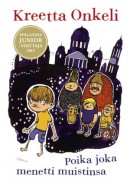 Poika joka menetti muistinsa
Poika joka menetti muistinsa
[The boy who lost his memory]
Helsinki: Otava, 2013. 111 pp.
ISBN 978-951-1-27022-5
€22.90, hardback
Kreetta Onkeli, better known for her books for adults, was awarded the 2013 Finlandia Junior award for this book. Arto is a schoolboy who loses his memory, but goes off in search of himself with an open mind. He meets a number of people who are outsiders in various ways and learns important lessons from each of them. Onkeli portrays a child of around 11 to 13 who is confused by many things. Researchers consider this age group to fall into an in-between area: there aren’t enough appealing activities on offer for kids of this age, who are treated as an awkward bunch both at home and at school. This book contains some rule-breakers: the boys eat at a restaurant buffet without paying and ride the subway without a ticket while other characters hint at forging official documents. Adult readers with their eyes closed to reality might consider Arto’s odyssey an anxiety-inducing vision of the future, in which grown-ups are not shown in a flattering light. Children, however, will get wrapped up in this absurd adventure.
Translated by Ruth Urbom
Alexandra Salmela: Kirahviäiti ja muita hölmöjä aikuisia [The giraffe mummy and other silly adults]
9 January 2014 | Mini reviews, Reviews
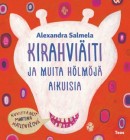 Kirahviäiti ja muita hölmöjä aikuisia
Kirahviäiti ja muita hölmöjä aikuisia
[The giraffe mummy and other silly adults]
Kuvitus [Ill. by]: Martina Matlovicová
Helsinki: Teos, 2013. 96 pp., ill.
ISBN 978-951-851-466-7
€27.90, hardback
The first children’s book by Alexandra Salmela, who has previously published a novel for adults, brings some sorely needed anarchy to Finnish storybooks. The 21 brief stories encourage children to add to them, whether by drawing, writing or out loud. Salmela’s tales are populated by trolls, dragons, knights and princesses, as well as ordinary children with silly parents. A boy called Ossi has two mums: Little Mum and Big Mum. One night, Little Mum collapses under the Tree of Exhaustion, but Ossi and his little sister hug their mum better. Allu’s absent-minded dad manages to mislay his head, and two perfect parents trade in their defective son Sulo at the child repair shop. The collage images by Slovakian illustrator Martina Matlovičová will work their way straight into your subconscious and start to bubble away.
Translated by Ruth Urbom
Jukka Laajarinne & Timo Mänttäri: Isä vaihtaa vapaalle [Dad takes time off]
9 January 2014 | Mini reviews, Reviews
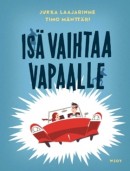 Isä vaihtaa vapaalle
Isä vaihtaa vapaalle
[Dad takes time off]
Kuvitus [Ill. by]: Timo Mänttäri
Helsinki: WSOY, 2013. 31 pp., ill.
ISBN 978-951-0-39780-0
€26.90, hardback
Isä vaihtaa vapaalle is a picture book infused with wry humour which lends itself to both realistic and fanciful readings. In the story, a girl’s father is a secret agent. He’d like to reduce his working hours to spend more time with his daughter, but his employer has other ideas. This book provides an amusing reflection of its time: parents’ job titles often do not mean much to children, so their strange roles and the heavy briefcases parents lug home start to take on a life of their own in children’s minds. The story is free from clichés about gender roles and will entertain boys and girls alike. Timo Mänttäri, making his debut as a children’s book illustrator here, depicts fast-paced, dangerous situations and amusing details. The comic book-style narrative and large, double-page illustrations create suspense in this zippy story. The words and pictures are seamlessly integrated, and the not-overlong text is balanced by the exceptionally strong, expressive visuals.
Translated by Ruth Urbom
Riitta Jalonen & Kristiina Louhi: Aatos ja Sofian meri [Aatos and Sofia’s sea]
9 January 2014 | Mini reviews, Reviews
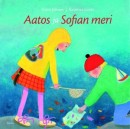 Aatos ja Sofian meri
Aatos ja Sofian meri
[Aatos and Sofia’s sea]
Kuvitus [Ill. by]: Kristiina Louhi
Helsinki: Tammi, 2013. 36 pp., ill.
ISBN 978-951-31-7048-6
€21.90, hardback
The duo of Riitta Jalonen and Kristiina Louhi has come up with yet another well-rounded picture book trilogy. Aatos and Sofia are sensitive, independent preschoolers, each with a good imagination and the ability to savour fleeting moments. It is rare for children’s books to contain such a nuanced yet natural portrayal of companionship and devoted friendship between children. Sofia has her feet more firmly planted on the ground that Aatos, who is more prone to let his emotions run free. Sofia’s mum’s aerobics sessions are a fun contrast with the children’s slower-paced lifestyle, in which they hold on to individual moments. This book champions children’s free, creative play and their right to a long childhood. Kristiina Louhi’s illustration style is both traditional and extremely modern.
